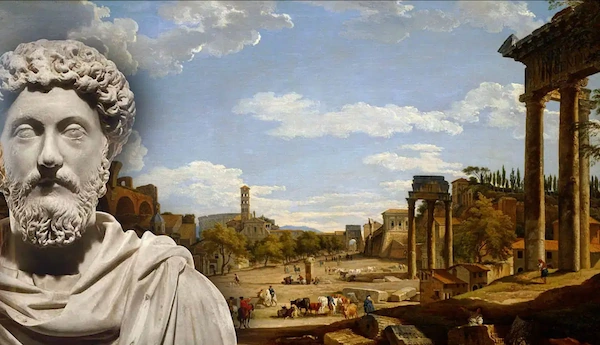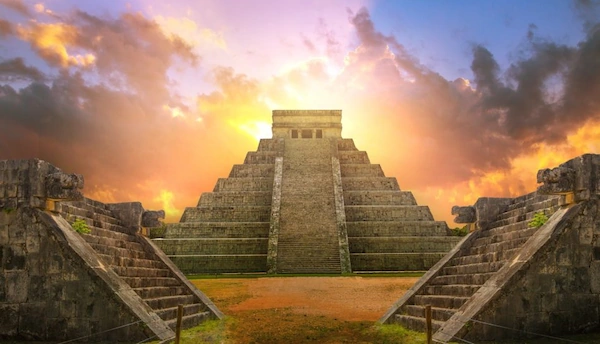
Abstract: The Ancient Wisdom of Stoicism on Mortality
This essay examines the central role of death consciousness in Stoic philosophy, arguing that the Stoic conception of mortality serves not as morbid preoccupation but as the foundational principle for ethical living. Through analysis of primary sources from Zeno through Marcus Aurelius, combined with contemporary psychological research, this investigation demonstrates how Stoic memento mori practices transform our understanding of time, value, and human flourishing. The Stoic preparation for death emerges not as withdrawal from life, but as the most profound engagement with it.
Introduction
The Paradox of Living by Dying
“You could leave life right now. Let that determine what you do and say and think.” — Marcus Aurelius, Meditations 2.11
The human condition presents us with perhaps the greatest philosophical paradox: we are the only species that knows with certainty it will die, yet this knowledge, rather than paralyzing us, can become the foundation for our most meaningful existence. The ancient Stoics, far from being the emotionally detached figures of popular misconception, developed the most sophisticated framework in Western philosophy for transforming death consciousness into a guide for vibrant, purposeful living.
This investigation examines how Stoic philosophy positioned death not as life’s opposite but as its most essential teacher. Through rigorous analysis of primary sources, historical context, and modern psychological validation, we will discover that the Stoic approach to mortality offers not escape from the human condition but radical acceptance of it—and through that acceptance, unprecedented freedom.
The stakes of this inquiry extend far beyond academic philosophy. In an age where death has been sanitized, medicalized, and removed from daily consciousness, the Stoic model presents an alternative: death as the ultimate advisor for how to live.
Part I
Historical Foundations and Philosophical Architecture
The Genesis of Stoic Death Consciousness
Stoicism emerged not in the leisured contemplation of an ivory tower but in the brutal realities of Hellenistic life. The collapse of the classical Greek polis, the rise of vast empires, political instability, plague, and warfare created what historian William Irvine calls “the anxiety of powerlessness.” Into this uncertainty stepped Zeno of Citium (334-262 BCE), whose philosophical revolution began, ironically, with personal catastrophe.
The shipwreck that cost Zeno his merchant fortune became philosophy’s gain. Stranded in Athens around 300 BCE, he encountered the Socratic dialogues and experienced what he later described as his true awakening—not to loss, but to what could not be lost. This distinction would become central to Stoic death philosophy: the recognition that external circumstances, including life itself, belong to the category of preferred indifferents—valuable but not essential to human flourishing (eudaimonia).
The Painted Porch: Philosophy for Public Life
Zeno established his school not in private gardens like the Epicureans, but in the Stoa Poikile—the “Painted Porch”—a public colonnade in the Athenian agora decorated with murals depicting heroic deaths in battle. The setting was prophetic: Stoicism would be a philosophy practiced in the midst of life’s dangers, not in retreat from them.
The painted battle scenes surrounding the daily philosophical discussions served as constant memento mori. Students could not forget that the heroes depicted had faced death courageously, transforming mortality from abstract concept to practical challenge. This integration of death consciousness into daily philosophical practice would become Stoicism’s distinguishing characteristic.
The Tripartite Structure: Logic, Physics, Ethics
The Stoics organized philosophy into three interconnected disciplines, each contributing to their comprehensive understanding of mortality:
Logic (Logike): The Discipline of Assent
Stoic logic, far more than formal reasoning, encompassed what we might call cognitive psychology. The fundamental insight was that our suffering comes not from external events but from our judgments about them. Applied to death, this meant examining and correcting false beliefs about mortality.
Chrysippus (279-206 BCE), the third head of the Stoa, identified common cognitive errors regarding death:
- Temporal confusion: believing we own our future time.
- Identity attachment: conflating the self with the perishable body.
- Outcome dependence: making happiness contingent on longevity.
- Comparative thinking: measuring our lives against others’ lifespans.
The discipline of assent (synkatathesis) trained practitioners to recognize these automatic thoughts and choose reasoned responses instead.
Physics (Physike): The Cosmic Perspective
Stoic physics was not science in the modern sense but cosmology—a comprehensive view of reality that placed human mortality within universal patterns. The Stoics were materialists who saw the cosmos as a single living organism animated by divine reason (logos).
This cosmological framework transformed death from tragedy to natural process. As Epictetus taught: “You came into this world as a part, and you will vanish into that which gave you birth. But this is not destruction—it is return to the universal Reason.”
The Stoic doctrine of ekpyrosis—cosmic conflagration and renewal—suggested that even the universe itself “died” and was reborn in endless cycles. If the cosmos could accept its own mortality, how much more should individual humans embrace theirs?
Ethics (Ethike): The Art of Living
Stoic ethics culminated the logical and physical disciplines in practical wisdom. The central insight was that virtue (arete)—wisdom, justice, courage, and temperance—constituted the sole true good, while everything else, including life duration, remained indifferent.
This did not mean life was worthless, but rather that its value lay not in quantity but in the quality of virtue practiced within it. A single day lived with complete virtue was infinitely preferable to decades of moral mediocrity.
Part II
The Great Teachers and Their Deaths
Zeno of Citium: Philosophy’s First Martyr of Consistency
The founder’s death embodied Stoic principles with startling literalness. According to Diogenes Laërtius, the elderly Zeno tripped while leaving school, injuring his finger. Taking this as a divine sign that his work was complete, he held his breath until he died, reportedly quoting Niobe: “I come, I come, why dost thou call for me?”
Modern readers might dismiss this as suicide, but Zeno’s choice reflected sophisticated Stoic reasoning. He had taught that the wise person stays in life only as long as virtue can be practiced effectively. When circumstances—age, infirmity, or divine indication—suggested that continued existence would compromise philosophical integrity, the sage was free to choose departure.
This was not arbitrary self-destruction but principled euthanasia in its literal sense—a “good death” that completed a virtuous life.
Cleanthes: The Water-Carrier Philosopher
Zeno’s successor, Cleanthes (331-232 BCE), worked as a water-carrier by night to support his philosophical studies by day. His death demonstrated the same working-class practicality that marked his life. When physicians prescribed temporary fasting to treat an illness, Cleanthes complied. Upon recovery, however, he refused to resume eating, explaining that he had already begun the journey toward death and saw no reason to turn back.
Cleanthes’s decision reflected the Stoic understanding of death as a process rather than an event. Once the dying process had begun—whether through illness, age, or circumstance—forcing a return to life might constitute unnatural interference with cosmic order.
Chrysippus: Death with Laughter
The systematic genius who gave Stoicism its logical rigor died, according to one account, laughing at his own joke after drinking unmixed wine. When he saw a donkey eating figs, Chrysippus supposedly cried out, “Quick, give the donkey some wine to wash down the figs!” and died laughing at his own wit.
Whether historical or legendary, this account captures essential Stoic wisdom: death need not be solemn to be philosophical. The ability to maintain humor in extremis demonstrated the ultimate freedom—liberation from conventional expectations about how one “should” die.
Seneca: The Forced Choice
Lucius Annaeus Seneca (4 BCE – 65 CE) faced perhaps history’s most famous philosophical death test when Emperor Nero, his former student, ordered his suicide following accusations of conspiracy. Tacitus provides our most detailed account in the Annals:
“Without any sign of fear, he called for tablets to make his will… When this was refused, he turned to his friends and told them that since he could not reward them for their services, he would leave them his most precious possession—the image of his life.”
Seneca’s death unfolded over hours as he opened his veins, continued philosophical conversation with disciples, and dictated final thoughts. When blood loss proceeded too slowly, he took poison, and finally required a vapor bath to complete the process. Throughout, he maintained the composure he had spent decades cultivating.
The extended dying process allowed Seneca to demonstrate that philosophical preparation for death was not theoretical exercise but practical skill—literally a matter of life and death.
Epictetus: The Teacher’s Final Lesson
Though details of Epictetus’s death remain sparse, his life’s trajectory from slave to Rome’s most influential moral teacher embodied his central doctrine: external circumstances cannot compromise inner freedom unless we grant them permission.
Born disabled and enslaved, Epictetus gained physical freedom only to discover that most people remained enslaved by their opinions, desires, and fears—especially fear of death. His teaching emphasized that true liberation came through accepting what Fate assigned while maintaining complete sovereignty over our responses.
The absence of dramatic death narratives for Epictetus may itself be significant. For him, dying well meant dying as one had lived—with attention to what remained within human control and serene acceptance of what lay beyond it.
Marcus Aurelius: The Philosopher-Emperor’s Final Campaign
Marcus Aurelius (121-180 CE) died as he had lived—on duty. Campaigning against Germanic tribes along the Danube frontier, he fell ill and continued writing philosophical reflections until shortly before his death. His final Meditations entries show a mind preparing for departure while maintaining concern for imperial responsibilities.
The emperor’s death demonstrated that Stoic preparation for mortality was not incompatible with worldly engagement but rather made such engagement more focused and effective. Knowing that his time was limited, Marcus wasted none of it on non-essentials.
Part III
The Architecture of Mortality – Core Stoic Practices
Memento Mori: The Daily Practice of Death Consciousness
The Latin phrase memento mori—”remember that you must die”—encapsulated the Stoic practice of maintaining death awareness without morbid fixation. This was not pessimistic brooding but practical wisdom: consciousness of mortality as a tool for prioritizing what truly mattered.
Marcus Aurelius practiced memento mori systematically in his Meditations:
“At dawn, when you have trouble getting out of bed, tell yourself: ‘I have to go to work—as a human being. What do I have to complain of, if I’m going to do what I was born for—the things I was brought into the world to do?'” (5.1)
The morning reflection combined mortality awareness with purpose identification. Knowing that the day might be one’s last transformed routine activities into opportunities for virtue.
Contemporary psychological research validates ancient Stoic intuitions about mortality salience. Terror Management Theory, developed by Sheldon Solomon and colleagues, demonstrates that subtle reminders of death tend to increase meaning-seeking behavior, strengthen commitment to personal values, and reduce concern with trivial matters.
Premeditatio Malorum: Negative Visualization
Seneca advocated premeditatio malorum—systematically imagining potential losses, including one’s own death—as preparation for adversity and training in gratitude. This practice served multiple functions:
Psychological Inoculation: Repeated mental rehearsal of difficulties reduced their emotional impact when encountered in reality, similar to modern exposure therapy techniques.
Value Clarification: Imagining loss revealed what truly mattered versus what merely seemed important due to habit or social conditioning.
Present Moment Appreciation: Contemplating future absence heightened awareness of current blessings, transforming taking-for-granted into active gratitude.
Attachment Regulation: Regular practice of imagining loss prevented the formation of excessive emotional dependencies that made loss traumatic rather than natural.
Seneca provided specific instructions for death meditation:
“Every new beginning comes from some other beginning’s end. Set aside a certain number of days, during which you shall be content with the scantiest and cheapest fare, with coarse and rough dress, saying to yourself the while: ‘Is this the condition that I feared?'” (Letters 18.5-6)
The View from Above (Anabasin): Cosmic Perspective Taking
Marcus Aurelius frequently employed what Pierre Hadot termed “the view from above”—imaginatively observing human life from cosmic perspective to reduce the ego-driven anxieties that made death terrifying:
“You came from nothing and will return to nothing. What have you lost?” (Meditations 5.13)
This practice served several philosophical functions:
Ego Reduction: Seeing oneself as one temporary arrangement of universal matter dissolved the inflated self-importance that made personal death seem catastrophic.
Temporal Perspective: Human lifespans, viewed against cosmic time, became brief moments in an eternal process rather than the entire universe of experience.
Unity Recognition: The view from above revealed apparent individuals as temporary expressions of underlying cosmic unity, making death a return rather than annihilation.
Value Reorientation: From cosmic perspective, conventional status markers—wealth, fame, political power—revealed their essential triviality, while virtue remained significant across all scales.
The Evening Review (Examen): Daily Accounting
Seneca established the practice of evening self-examination, asking three essential questions:
- What did I do well today that aligned with virtue?
- Where did I fall short of my philosophical principles?
- If this had been my last day, would I be satisfied with how I spent it?
This daily practice created what contemporary psychology calls “implementation intentions”—specific plans for behavioral change based on regular performance assessment. The mortality framework provided urgency and focus that purely abstract ethical reflection often lacked.
Part IV
Philosophical Innovations – Death as Teacher
The Doctrine of Preferred Indifferents
Perhaps Stoicism’s most sophisticated innovation was the category of “preferred indifferents” (proēgmena)—things that are naturally preferable but not essential to human flourishing. Life itself belonged to this category: generally preferable to death, but not if maintaining life required compromising virtue.
This doctrine resolved apparent contradictions in Stoic teaching. The same philosophy that counseled indifference to death could also recommend reasonable efforts to preserve health and safety. The key distinction lay not in the external circumstances but in our internal response to them.
Natural Preference vs. Psychological Dependency: It was natural and reasonable to prefer life to death, health to sickness, prosperity to poverty. But making happiness dependent on achieving preferred indifferents created the psychological slavery that Stoicism sought to eliminate.
Conditional Attachment: The wise person could love life deeply while remaining prepared to relinquish it when circumstances demanded. This was not contradictory but precisely what distinguished philosophical love from desperate clinging.
Oikeiosis: The Expanding Circle of Concern
The Stoic concept of oikeiosis—often translated as “appropriation” or “familiarization”—described the natural expansion of human concern from self to family to community to humanity to cosmos. Death played a crucial role in this psychological development.
Personal Oikeiosis: Accepting one’s own mortality was the first step toward wisdom, as it dissolved the ego-protection mechanisms that prevented clear thinking.
Social Oikeiosis: Understanding that everyone shared the same mortal condition created natural basis for compassion and justice. Marcus Aurelius: “We were born to work together like feet, hands, and eyes, like the two rows of teeth, upper and lower.” (2.1)
Cosmic Oikeiosis: Recognizing personal death as participation in universal processes—stars burning out, seasons changing, species evolving—integrated individual mortality into cosmic meaning.
This expansion of identification meant that physical death lost its terror because the self was no longer confined to the biological body. As Epictetus taught: “You are not your body and hair, but your capacity for choice.”
The Discipline of Action: Virtue Under Mortality’s Shadow
Knowing that time was limited, the Stoics developed sophisticated frameworks for ethical action that remain remarkably relevant:
The Circle of Choice: Epictetus divided all possible concerns into three categories:
- What is entirely up to us (our judgments, desires, and actions)
- What is not up to us at all (other people’s behavior, natural disasters, the time of death)
- What is partially up to us (health, reputation, success in projects)
Death consciousness clarified this division by revealing how much energy most people wasted trying to control what lay entirely beyond their influence.
Present Moment Ethics: Since only the present moment was guaranteed, virtue had to be practiced immediately rather than postponed for more convenient circumstances.
Legacy Through Character: While external achievements might be forgotten, virtue practiced consistently created what Marcus Aurelius called “the inner citadel”—an unassailable core that death could not touch because it had already achieved its essential purpose.
Part V
Death in Stoic Cosmology – The Rational Universe
Logos and Universal Reason
The Stoics conceived the universe as pervaded by logos—divine reason that ordered all events according to perfect wisdom. This cosmic rationality meant that everything, including individual deaths, occurred for good reasons even when those reasons remained hidden from human perspective.
Epictetus expressed this faith in cosmic wisdom through his famous formulation: “Don’t demand that things happen as you wish—wish that they happen as they do, and you will go on well.” (Enchiridion 8)
Applied to mortality, this meant that the timing and manner of death were determined by the same rational principle that governed stellar motion and seasonal change. Resistance was not only futile but indicated failure to comprehend the essential reasonableness of natural law.
Material Continuity: Death as Transformation
Stoic physics was materialist, but not in the reductive sense often associated with modern materialism. The Stoics believed that matter itself was permeated by reason and that individual identity represented temporary arrangement of universal substance.
This view transformed death from annihilation to rearrangement. Marcus Aurelius frequently used transformation metaphors:
“Time is a river of vanishing appearances and the current is swift. There is nothing that does not soon disappear. Nothing that does not soon change.” (6.15)
The metaphor implied continuity as well as change. Rivers remain rivers despite constantly changing water; the cosmos remained rationally ordered despite constant material transformation.
Eternal Recurrence: The Stoic Doctrine of Cosmic Cycles
Some Stoics, particularly Chrysippus, taught that the universe periodically consumed itself in cosmic fire (ekpyrosis) only to be reborn in exactly the same configuration. This doctrine of eternal recurrence meant that individual lives, including their deaths, would repeat infinitely across cosmic cycles.
Modern readers often find this doctrine disturbing, but for the Stoics it provided profound consolation. If everything repeated exactly, then nothing was ultimately lost—every virtue practiced, every love experienced, every moment of beauty would recur endlessly throughout eternity.
The doctrine also provided the ultimate test of life satisfaction: if you had to live your exact life infinite times, would you be content with your choices? This “eternal recurrence test” served as a powerful tool for ethical evaluation.
Part VI
Practical Applications – Ancient Wisdom for Modern Dying
Clinical Applications: Stoicism in End-of-Life Care
Contemporary hospice and palliative care workers increasingly draw on Stoic principles, finding that ancient wisdom provides practical tools for helping patients and families navigate mortality:
Acceptance Training: Stoic exercises in accepting what cannot be changed prove invaluable for terminal patients struggling with anger and denial.
Value Clarification: The Stoic focus on virtue over circumstances helps patients identify what remains meaningful despite physical decline.
Present Moment Awareness: Stoic mindfulness practices allow patients to find peace in immediate experience rather than mourning lost futures.
Family Support: Stoic teachings about natural cycles help families understand death as completion rather than failure.
Dr. William Irvine’s research at Wright State University demonstrates that brief training in Stoic techniques significantly reduces death anxiety among both patients and healthcare providers.
Psychological Research: Terror Management Theory
Ernest Becker’s The Denial of Death and subsequent Terror Management Theory research validate core Stoic insights about mortality:
Death Salience Effects: Subtle reminders of mortality consistently increase meaning-seeking behavior, strengthen cultural worldview defense, and enhance self-esteem striving—exactly what Stoics observed through memento mori practice.
Meaning-Making Systems: Humans create elaborate cultural meaning systems primarily to manage mortality anxiety, but these systems often increase rather than reduce psychological suffering through competitive status-seeking and defensive behaviors.
Authentic vs. Defensive Responses: TMT research distinguishes between defensive responses to death anxiety (materialism, aggression, conformity) and authentic growth responses (creativity, intimacy, virtue pursuit)—a distinction the Stoics made through their emphasis on internal versus external goods.
Cognitive Behavioral Therapy: Stoic Techniques in Modern Practice
CBT directly incorporates Stoic practices, often without acknowledging the historical connection:
Cognitive Restructuring: The Stoic practice of examining and correcting false beliefs about death parallels CBT’s work on catastrophic thinking and cognitive distortions.
Behavioral Experiments: Stoic exercises like voluntary discomfort and negative visualization function as behavioral experiments that test the accuracy of feared outcomes.
Values-Based Action: The Stoic emphasis on virtue-guided behavior regardless of external circumstances mirrors CBT’s values-based intervention strategies.
Mindfulness Integration: Modern “third wave” CBT approaches incorporate mindfulness techniques that closely parallel Stoic present-moment awareness practices.
Part VII
Contemporary Relevance – Death in the Modern World
The Denial of Death in Contemporary Culture
Philippe Ariès’s historical analysis in The Hour of Our Death traces how Western societies gradually removed death from daily consciousness. Medieval people lived surrounded by death—family members died at home, bodies were prepared by relatives, cemeteries occupied town centers. Death was familiar, ritualized, and integrated into community life.
Modern death, by contrast, occurs in institutions, handled by professionals, discussed in euphemisms (“passed away,” “lost,” “no longer with us”). This sanitization, while reducing some forms of suffering, creates what Ariès calls “forbidden death”—mortality so thoroughly hidden that it becomes terrifying precisely because it remains unknown.
The Stoic model offers an alternative: death neither sensationalized nor denied but accepted as natural fact requiring practical preparation.
Technology and Mortality: Digital Immortality vs. Stoic Acceptance
Contemporary technological culture promises various forms of immortality—life extension, consciousness uploading, digital preservation of personality. These projects, while scientifically fascinating, often represent what Stoics would recognize as attachment to preferred indifferents.
The Stoic perspective neither condemns nor endorses life extension technologies but asks different questions:
- Does pursuit of technological immortality increase or decrease present moment awareness?
- Are these projects driven by rational planning or by terror of mortality?
- How do immortality aspirations affect our commitment to virtue in current circumstances?
- What forms of legacy truly transcend biological death?
Stoicism suggests that consciousness upload or life extension, should they become available, would be preferred indifferents—nice to have but not essential to human flourishing.
Environmental Ethics: Individual Death and Species Mortality
Climate change and environmental destruction raise mortality questions at species level. If human civilization faces potential extinction, how should individuals respond?
Stoic principles prove remarkably relevant:
Cosmic Perspective: Human species mortality, viewed from cosmic timescales, represents natural process rather than ultimate catastrophe.
Virtue Under Uncertainty: Not knowing whether environmental efforts will succeed does not eliminate obligation to act virtuously regarding planetary health.
Legacy Through Character: Even if human species does not survive, virtue practiced during the crisis remains valuable for its own sake.
Present Moment Responsibility: Uncertainty about species future increases rather than decreases obligation to live ethically in current circumstances.
Marcus Aurelius faced analogous challenges during the Antonine Plague and Germanic invasions that threatened Roman civilization. His response—continued commitment to duty and virtue despite uncertainty about outcomes—provides a model for environmental crisis response.
Social Media and Mortality: Death in the Digital Age
Social media creates new contexts for encountering mortality—memorial pages, livestreamed deaths, viral dying testimonials. These technologies can either increase death awareness (consistent with Stoic practice) or create voyeuristic consumption of others’ mortality that avoids personal confrontation with death.
Stoic principles for digital death engagement:
Memento Mori Applications: Use social media death encounters as reminders of personal mortality rather than entertainment or emotional drama.
Virtue-Based Responses: When someone dies, focus on how to honor their memory through improved character rather than performative grief displays.
Present Moment Priorities: Let others’ deaths clarify personal values and time allocation rather than simply generating temporary sentiment.
Community Support: Use digital platforms to provide genuine assistance to grieving persons rather than accumulating sympathy engagement metrics.
Part VIII
Critical Assessments and Philosophical Objections
The Suicide Question: When Death Becomes Choice
Critics often charge that Stoic acceptance of rational suicide promotes death-seeking rather than life-affirmation. This criticism misunderstands Stoic reasoning but raises important questions about the boundaries of mortality acceptance.
Stoic Position: Death becomes rational choice only when continued life would compromise virtue or dignity, not as escape from temporary difficulties or emotional pain.
Modern Concerns: Contemporary understanding of depression, trauma, and mental illness reveals that many desires for death stem from treatable psychological conditions rather than rational philosophical assessment.
Balanced Approach: Stoic principles support both acceptance of natural mortality and reasonable efforts to treat psychological conditions that distort death-related judgment.
The key distinction lies between death as philosophical choice made from position of strength versus death as seeming escape from psychological suffering. The Stoics advocated the former while recognizing that the latter indicated need for therapeutic intervention.
The Emotion Question: Stoicism vs. Natural Grief
Another common criticism argues that Stoic death acceptance promotes emotional numbing that interferes with natural grief processes essential to human bonding and psychological health.
Historical Clarification: The Stoics distinguished between initial emotional responses (propatheiai), which were natural and unavoidable, and sustained emotional disturbance (pathe), which resulted from false judgments about external events.
Grief vs. Mourning: Stoics accepted initial grief as natural response to loss but worked to prevent grief from becoming chronic mourning that interfered with continued virtue practice.
Attachment vs. Appreciation: Stoic teachings aimed to transform possessive attachment into appreciative love—caring deeply for others while accepting that all relationships are temporary arrangements within cosmic process.
Modern Validation: Contemporary grief research supports Stoic insights about healthy versus pathological mourning. Successful grief adaptation involves maintaining connection to deceased persons while accepting the reality of death and reinvesting in continuing relationships.
The Privilege Question: Stoicism and Social Justice
Some critics argue that Stoic acceptance of mortality serves privileged classes by discouraging resistance to premature death caused by social injustice, poverty, racism, or oppression.
Historical Context: Many prominent Stoics (Epictetus, Marcus Aurelius during plagues) faced genuine powerlessness over mortality circumstances, not merely comfortable philosophical speculation.
Virtue-Based Action: Stoic principles demand justice as one of four cardinal virtues, requiring active opposition to preventable deaths caused by social systems.
Acceptance vs. Passivity: Stoic acceptance applies to ultimate mortality, not to specific timing or circumstances of death that might be influenced by social action.
Legacy Through Reform: Stoic emphasis on virtue-based legacy supports working for social changes that reduce premature mortality even while accepting personal mortality.
The strongest Stoic response to this criticism involves demonstrating how mortality acceptance actually increases rather than decreases commitment to justice by removing fear-based obstacles to moral courage.
Conclusion
The Art of Dying as the Art of Living
“He who learns to die unlearns slavery.” — Seneca, Letters 77.18
Our investigation reveals that Stoic preparation for death was never about death itself but about the quality of consciousness that mortality awareness creates. When we truly accept that our time is limited, that our control is partial, and that our essence lies not in duration but in character, we discover what the Stoics called ataraxia—profound tranquility that comes not from avoiding life’s difficulties but from meeting them with philosophical resources adequate to any circumstance.
The paradox that runs throughout this analysis resolves into profound simplicity: by learning to die well, we learn to live fully. Mortality consciousness, rather than diminishing life’s value, reveals what is truly valuable within it. The day we stop denying death is the day we stop wasting life.
Practical Integration: A Contemporary Stoic Practice
For modern readers seeking to apply these ancient insights, the evidence suggests a graduated approach:
Daily Memento Mori: Begin each day with brief reflection on mortality—not morbid dwelling but practical prioritization. “If this were my last day, how would I want to spend it?”
Weekly Negative Visualization: Once per week, spend 10-15 minutes imagining the loss of something precious—health, relationship, capability, life itself. Let the exercise generate gratitude for current blessings and clarity about essential values.
Monthly Cosmic Perspective: Take time monthly to contemplate the vast scales of space and time within which human life occurs. Let this perspective reduce daily irritations to proper size while highlighting the lasting significance of virtue.
Annual Life Review: Conduct yearly assessment using mortality as framework: “If I had died this year, would I be satisfied with how I lived?” Use the answer to guide following year’s commitments and priorities.
Study of Exemplars: Regularly read accounts of people who died well—not necessarily Stoics, but individuals who faced mortality with courage, compassion, and dignity. Let their examples expand your conception of how to meet death when it comes.
The Eternal Present: Stoicism’s Ultimate Gift
Perhaps the deepest insight emerging from this investigation concerns time itself. The Stoics discovered that mortality consciousness, paradoxically, leads not to future-focused anxiety but to present-moment intensity. When we know that this conversation, this sunset, this embrace might be our last, attention sharpens into what can only be called reverence.
Marcus Aurelius captured this transformation: “Very little is needed to make a happy life; it is all within yourself, in your way of thinking.” The “very little” included awareness that this moment—right now—contains everything essential to human flourishing: the opportunity to think clearly, choose wisely, act courageously, and love deeply.
Death consciousness thus becomes not life’s opposite but its most devoted teacher, not the enemy of happiness but the revealer of what happiness really means. The Stoics spent centuries refining this lesson, but its essence can be grasped immediately: when we stop running from mortality, we stop running from life.
In accepting our shared human fate, we discover our shared human dignity. In preparing for death, we learn the art of living. In learning to die unafraid, we unlearn all the smaller fears that kept us from becoming who we were meant to be.
The ancient Stoics offer us no easy comfort, no false promises, no escape from the human condition. They offer something far more valuable: a way to be fully human in the face of everything that seems to threaten our humanity. Their gift is not immortality but presence, not fearlessness but courage, not the elimination of death but the transformation of dying into the final expression of a life well-lived.
This, ultimately, is what it means to prepare for death: to live each day so fully, so virtuously, so lovingly, that death, when it comes, finds nothing left undone—not because we have finished all our projects, but because we have become who we were meant to become. The person who has learned this art needs no other philosophy. They have learned to live by learning to die, and in that paradox, they have touched the eternal within the temporal, the infinite within the finite, the divine within the human.
Memento mori, the Stoics whispered across the centuries. Remember that you must die. And in remembering, remember also who you are and how magnificently you can live.
Bibliography and Further Reading
Primary Sources
- Aurelius, Marcus. Meditations. Trans. Martin Hammond. London: Penguin Classics, 2006.
- Epictetus. Discourses and Enchiridion. Trans. Robert Dobbin. London: Everyman, 2008.
- Seneca, Lucius Annaeus. Letters from a Stoic. Trans. Robin Campbell. London: Penguin Classics, 2004.
- Seneca, Lucius Annaeus. On the Shortness of Life. Trans. C.D.N. Costa. London: Penguin Classics, 2005.
Scholarly Studies
- Hadot, Pierre. Philosophy as a Way of Life. Chicago: University of Chicago Press, 1995.
- Irvine, William B. A Guide to the Good Life: The Ancient Art of Stoic Joy. New York: Oxford University Press, 2009.
- Nussbaum, Martha C. The Therapy of Desire: Theory and Practice in Hellenistic Ethics. Princeton: Princeton University Press, 1994.
- Sellars, John. Stoicism. Berkeley: University of California Press, 2006.
Contemporary Applications
- Solomon, Sheldon, et al. The Worm at the Core: On the Role of Death in Life. New York: Random House, 2015.
- Yalom, Irvin D. Staring at the Sun: Overcoming the Terror of Death. San Francisco: Jossey-Bass, 2008.
- Becker, Ernest. The Denial of Death. New York: Free Press, 1973.
- Ariès, Philippe. The Hour of Our Death. New York: Knopf, 1981.
ARE YOU A TRUE STOIC?
Read the following statements and pick the ones that best represent your thoughts.
Count the number of selected boxes and read the corresponding profile.
0-1: You are a genuine stoic
2-3: You are moderately stoic
4-5: You are basically anti-stoic
6: You are the opposite of Stoicism




